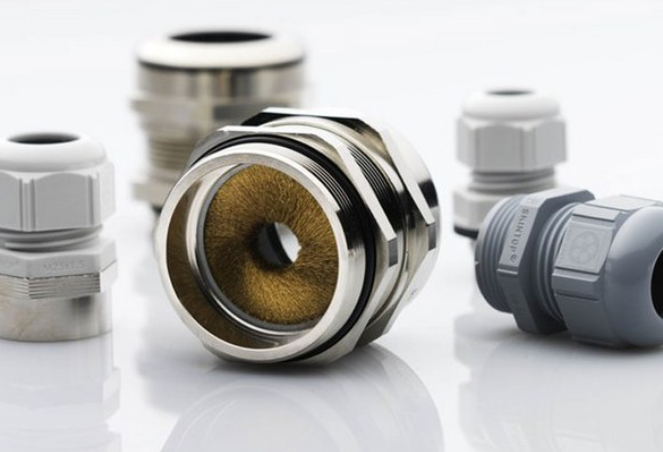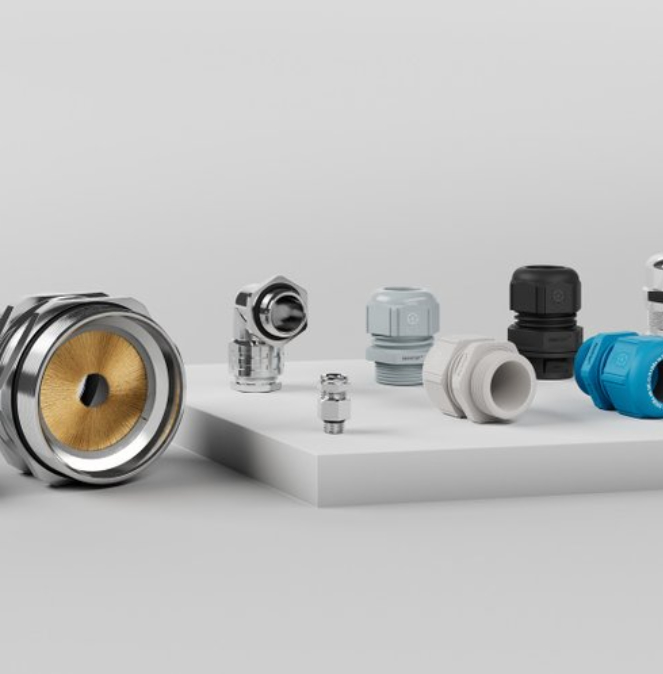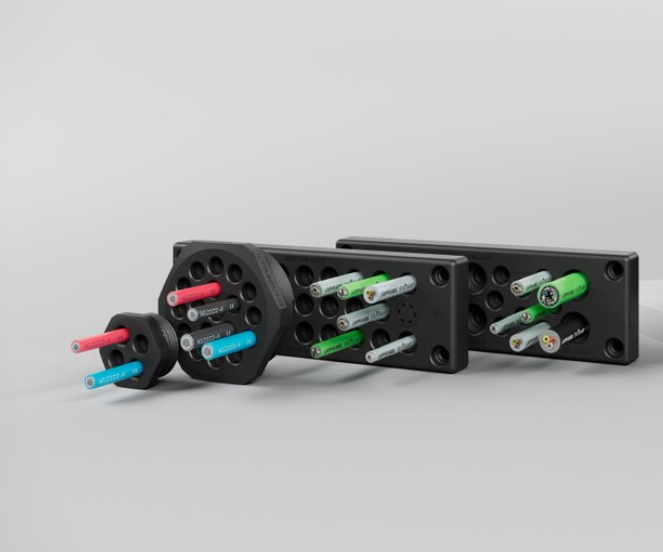SKINTOP® – The Handy Cable Glands
SKINTOP® cable glands ensure a secure connection in a matter of seconds. The universal systems are simple, perfect and easy to install: simply insert the cable, close and go. The cable is securely fixed, centred and hermetically sealed.
Discover Our Cable Glands
Cable glands allow cables to be inserted into a housing, make it possible to securely seal both the cables and the housing and achieve cable strain relief. They protect the interior of the housing from harmful environmental influences such as dust and moisture. Our product range contains single-entries, multi-entries for multiple cables, as well as accessories and tools for assembling the glands.

At JJ-LAPP, we split the cable glands product range into single-entries and multi-entries

The JJ-LAPP product portfolio for single-entries and their potential uses are almost countless. As a result, the (normative) requirements associated with each purpose of use must be explored in an application-specific and individual manner.
Cable glands for single-entries are made of plastic, brass or stainless steel. Choose exactly the quality that a JJ-LAPP cable gland needs to have for your application. Whether for round or flat cables, for straight or angled bushings, for unassembled cables or cables with connectors, You are guaranteed to find what you are looking for.
Multi-entries from JJ-LAPP are available in two fundamentally different designs.
If the plug is already ready, select multi-entries for assembled cables.
The frame of these modular multi-cable glands is screwed to the unit or machine housing.
The modules that clamp individual cables can be exchanged individually.
In service cases, the working time is significantly reduced compared to a conventional multi-entry, which needs to be dismantled as a whole.
If the cable end is still open, select multi-entries for unassembled cables.
Tightening in or screwing in? You are free to decide according to your wishes. The multi-entries are available in round and rectangular design.
The unique gel seal with special membrane technology means that no pre-piercing of the bushings is necessary.
Large clamping ranges allow different cable diameters to be used.
Unoccupied bushings remain securely closed and sealed.
The range of cable gland accessories at JJ-LAPP is enormous. With lock nuts, blanking plugs, seals, dust protection elements and much more, a cable gland can be easily customised and quickly become the perfect guide for you and your applications.
Cable glands do not require a lot of tools. But as the saying goes: “Good tool, good work”. If you too want to work less hard, combine work steps and discover smart solutions for your day-to-day work, don’t hesitate to browse through the tools and accessories for cable glands.
Which essential requirements must a cable gland meet?
Cable glands protect the housing against external influences. Soiling such as dust or moisture or even water must not penetrate through the hole in the housing. The degree to which protection is guaranteed depends on the specified IP protection class (“Ingress Protection”). In accordance with DIN EN 60529; VDE 0470-1:2014-09, the protection class is made up of the first and second code numbers in the technical table T22.
- The cable gland is mounted on a test plate with the corresponding tightening torque from the operating instructions.
- A test mandrel is used instead of the cable.
- The structure is placed in a pressure chamber filled with water and exposed to a pressure of, for example, 5 bar for a period of 30 minutes.
The American equivalent to DIN EN 60529, i.e. the standard for IP protection classes, is the UL50E together with NEMA 250. The European and American standards do not match exactly, but are perfectly comparable. The UL50E specifies requirements for the housings of electrical devices, while the NEMA 250 specifies the type classes. It divides the use of the housing into outdoor (type 3, 3R, 3S, 4, 4X, 6 and 6P) and indoor applications (type 1, 2, 5, 12K and 13).
Cable glands protect the cable by providing optimum strain relief. Strain relief of a cable gland is a property that prevents the cable from being pulled out. The cable is centred and fastened, or almost clamped- without damaging the cable. This protection is essential for moving applications. In Europe, the strain relief requirements are described in DIN EN 62444, while in the USA, the requirements are defined in UL514 B.

Contact Us
Have questions or need assistance? Our dedicated team is here to help! Reach out to us today for personalised support and expert guidance on all your connectivity needs.